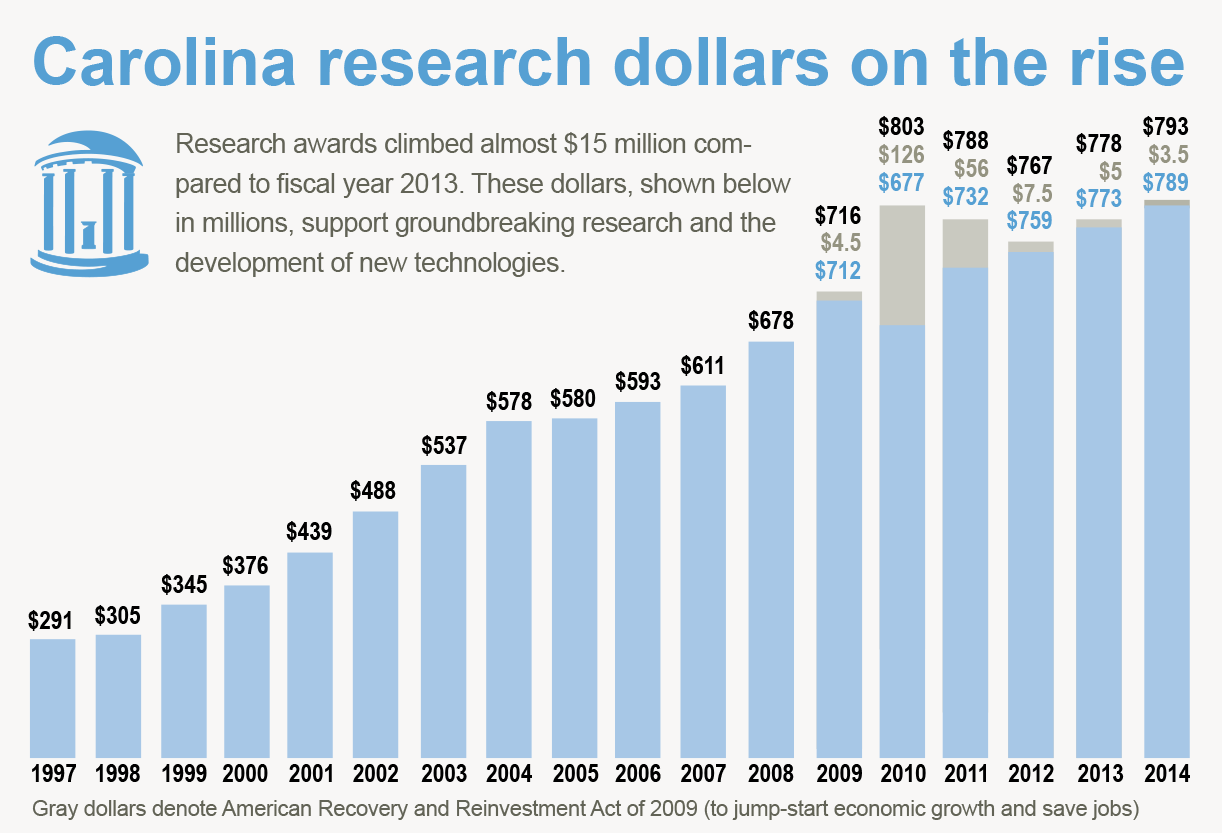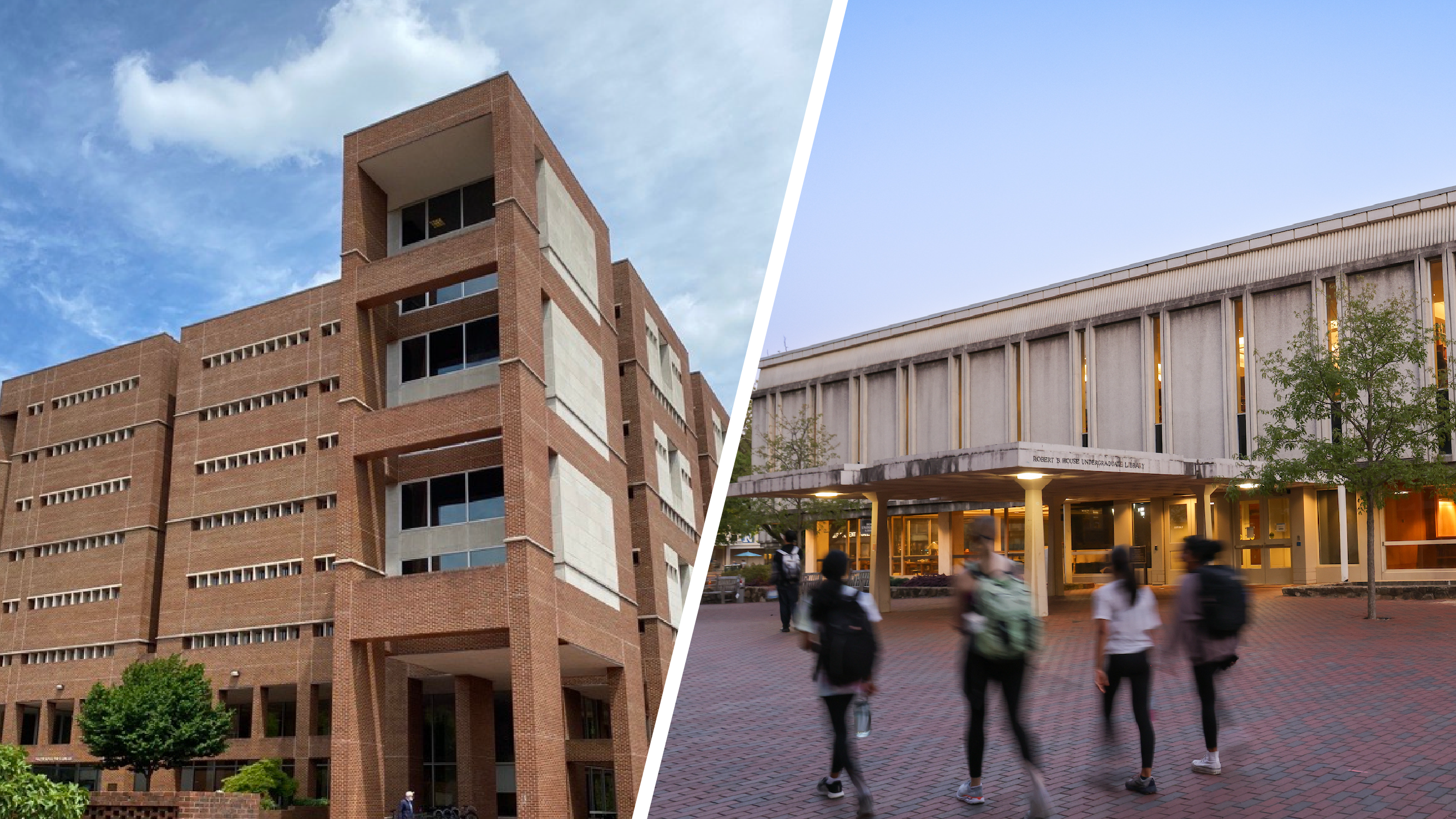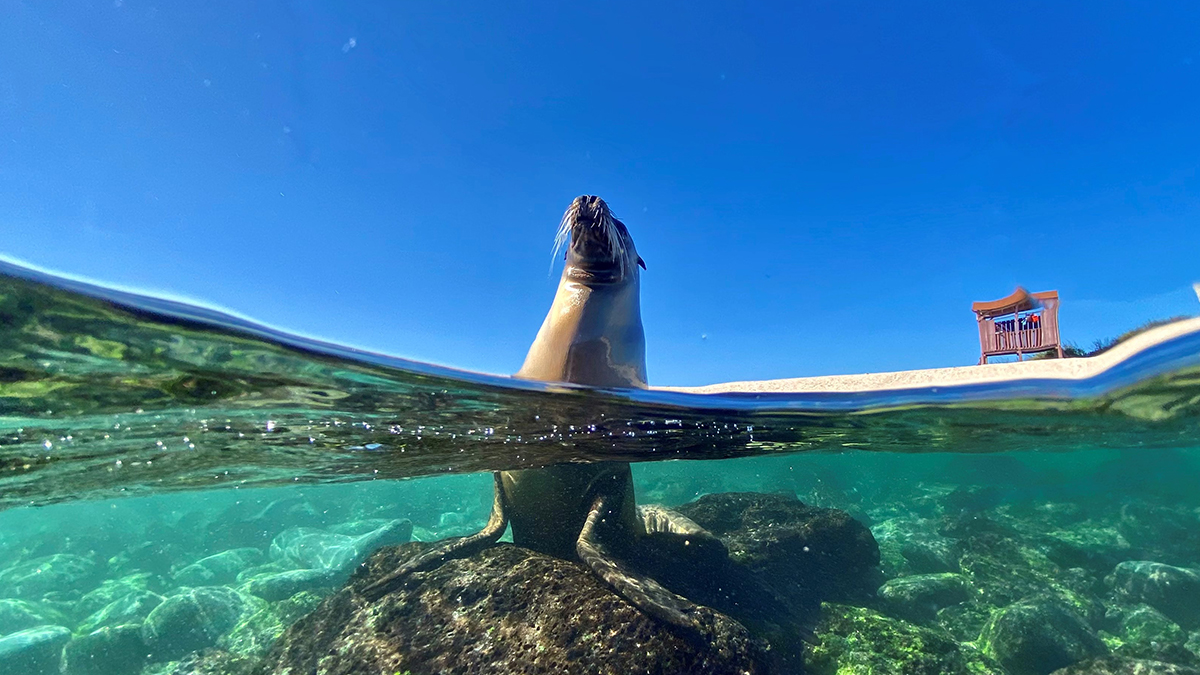Carolina research-award total climbs

Faculty from the University of North Carolina at Chapel Hill brought in $792.7 million in research contracts and grants in fiscal 2014, up $14.9 million from a total of $777.8 million in fiscal 2013.
“Carolina’s research excellence continues to drive significant economic growth and job creation in North Carolina, and those stellar results allow major funding partners to continue to make investments in our faculty,” said Chancellor Carol L. Folt. “Our researchers create technologies and innovations that are catalysts for new industries, accelerate progress toward a cure for diseases such as AIDS, and help target U.S. spending on global health threats. These funding partnerships and our expanding portfolio are part of a new era at Carolina that will help define us as a leading 21st century public research university.”
The largest sources of funding for Carolina’s research enterprise in 2014 came from the federal government, business and industry and foundations.
The federal government awarded UNC-Chapel Hill research about $570 million, or almost 72 percent of the fiscal 2014 total. The National Institutes of Health (NIH) was the largest of those federal funders, awarding more than $428 million. The National Science Foundation awarded about $37.4 million, the Department of Health and Human Services awarded about $22.2 million and the U.S. Agency for International Development (USAID) awarded about $21.5 million. Other federal entities awarded about $60.1 million. Awards from private industry totaled $44.3 million, up $1 million over fiscal 2013’s total.
Research centers and institutes played a critical role in bringing together scientific teams to win about $141.5 million, or almost 18 percent of the total $792.7 million. “The contributions these multidisciplinary centers and institutes make to the competitiveness of UNC’s research enterprise, and to North Carolina, cannot be overstated,” said Vice Chancellor for Research Barbara Entwisle.
Examples of major research awards and findings from fiscal 2014 include:
MEASURE Evaluation, led by the Carolina Population Center, won the university’s second-largest research grant ever of about $180 million, to be awarded over five years, from USAID. The award will be used to continue the research required to optimally target U.S. spending on global-health threats such as malaria and HIV.
The UNC Energy Frontier Research Center developed a way to convert the sun’s energy into hydrogen fuel. The U.S. Department of Energy, Office of Basic Energy Sciences, has awarded the center another $10.8 million to continue work on a complete system to store solar energy.
Carolina’s N.C. Translational and Clinical Sciences Institute partnered with N.C. A & T State University and RTI International to win $54.6 million from the NIH. The award helps speed up the process of translating research from the laboratory into real-world applications to save lives and improve patient care.
Eastman Chemical Co. funded about $1.7 million in chemistry and materials-science research at Carolina to help bring new technologies to market more quickly. Researchers at the UNC School of Medicine found a possible environmental cause of autism in a group of enzymes called topoisomerases. Their work, funded by the NIH, was named a 2013 top advance in autism research by Autism Speaks, a leading autism science and advocacy organization.
School of Medicine researchers also invented a way to find and kill cells that have pieces of HIV hidden inside them. The method, which has been shown to work in mice, might someday become a part of standard HIV treatment. Their work was funded by programs at the NIH and its National Cancer Center.
Carolina’s Environmental Finance Center won $2 million to help small communities in North Carolina and across the country improve their water systems. The award is from the U.S. Environmental Protection Agency. For more information about research at Carolina, visit: http://research.unc.edu.




